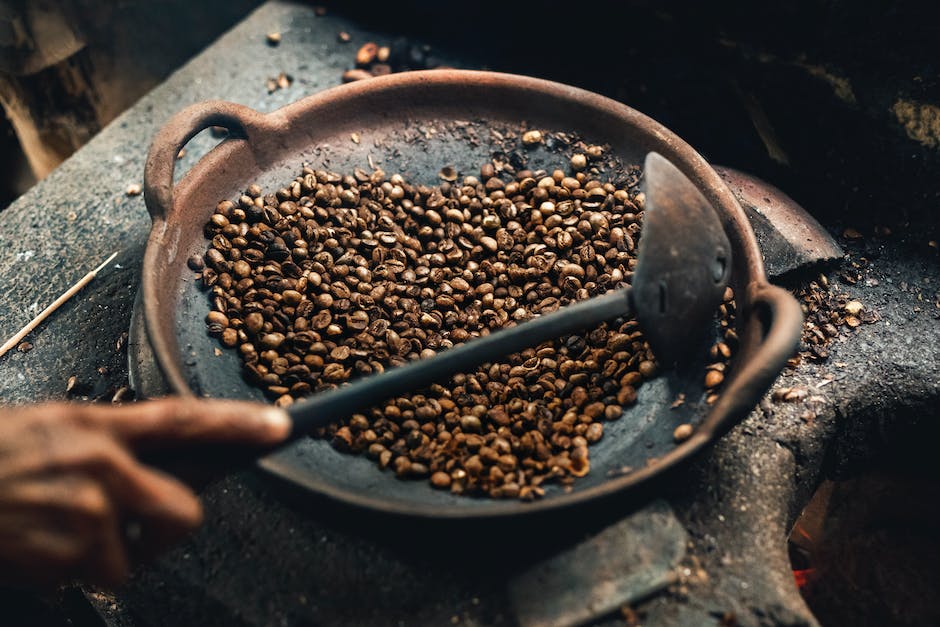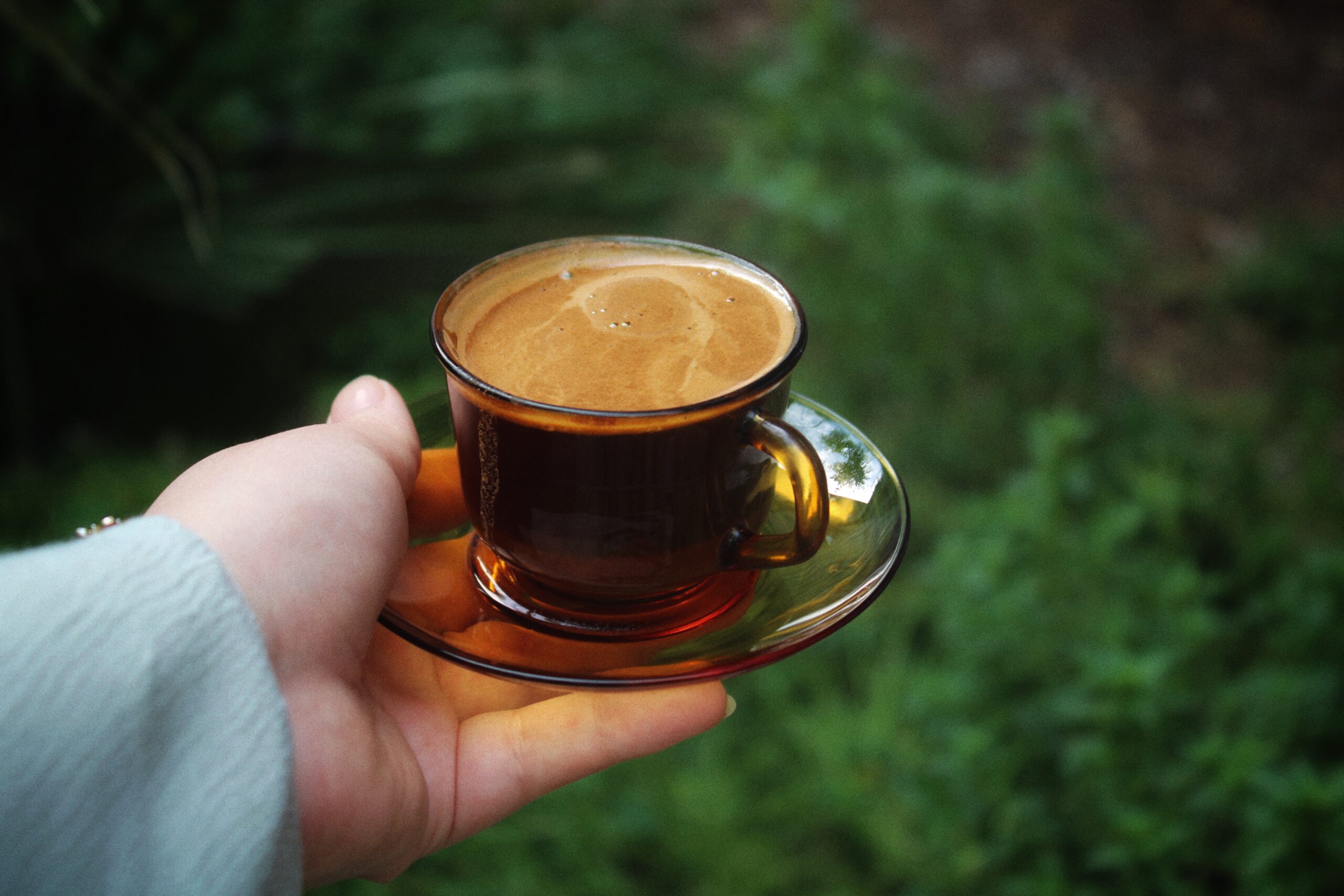Coffee events are a great way to learn about the latest and greatest coffee roasting techniques. From the basics of roasting to the most innovative techniques, coffee events provide an opportunity to learn from the experts and gain insight into the world of coffee roasting. From hands-on workshops to lectures and demonstrations, coffee events offer a unique opportunity to explore the art and science of coffee roasting. Whether you’re a beginner or an experienced roaster, you’ll find something to learn at a coffee event. In this article, we’ll explore some of the most innovative coffee roasting techniques that are being used at coffee events around the world.
The Future of Coffee Roasting: What Innovations Are on the Horizon?
Coffee roasting is an art form that has been around for centuries, and it’s only getting better with time. As technology advances, so does the way we roast coffee. In the near future, we can expect to see some exciting innovations in the world of coffee roasting.
One of the most exciting innovations on the horizon is the use of artificial intelligence (AI) in coffee roasting. AI-powered roasters can learn from past roasts and adjust the roast profile accordingly. This means that each roast can be tailored to the individual coffee bean, resulting in a more consistent and flavorful cup of coffee.
Another innovation that is gaining traction is the use of data-driven roasting. This involves collecting data from each roast and using it to make adjustments to the roast profile. This data can be used to identify the ideal roast profile for each coffee bean, resulting in a more consistent and flavorful cup of coffee.
Finally, we can expect to see more automated roasting machines in the future. These machines can be programmed to roast coffee beans to a specific profile, allowing for more consistent and flavorful cups of coffee.
These are just a few of the exciting innovations that are on the horizon for coffee roasting. As technology continues to advance, we can expect to see even more exciting innovations in the future. So, if you’re a coffee lover, keep an eye out for the latest and greatest in coffee roasting technology!
The History of Coffee Roasting: How It Has Evolved Over Time
Coffee roasting has been around for centuries, and it has evolved significantly over time. From the earliest days of roasting coffee beans over an open fire to the modern-day automated roasting machines, the process of roasting coffee has come a long way.
In the early days, coffee beans were roasted over an open fire, usually in a cast iron skillet. This method was used for centuries, and it was the only way to roast coffee beans until the late 19th century. This method was labor-intensive and time-consuming, and it was difficult to achieve a consistent roast.
In the late 19th century, the first automated coffee-roasting machines were developed. These machines used a rotating drum to roast the beans, and they allowed for more consistent roasting. This was a major breakthrough in the coffee industry, as it allowed for more efficient and consistent roasting.
In the early 20th century, the first electric coffee roasters were developed. These machines used electric heating elements to roast the beans, and they allowed for more precise control over the roasting process. This allowed for more consistent roasting and better flavor profiles.
Today, modern coffee roasters use a combination of electric heating elements and computer-controlled systems to roast the beans. This allows for precise control over the roasting process, and it allows for more consistent roasting and better flavor profiles.
Coffee roasting has come a long way since the days of roasting over an open fire. Today, modern roasting machines allow for precise control over the roasting process, and they allow for more consistent roasting and better flavor profiles. Coffee roasting is an art, and it has evolved significantly over time.
The Impact of Roasting on the Environment: What You Need to Know
When it comes to roasting, many people think of the delicious aroma of coffee beans or the mouth-watering smell of a roasted turkey. But what many don’t realize is that roasting can have a significant impact on the environment. In this article, we’ll discuss the environmental impact of roasting and what you can do to reduce it.
First, let’s look at the energy required to roast food. Roasting requires a significant amount of energy, which is usually generated from burning fossil fuels. This means that roasting can contribute to air pollution, as well as the release of greenhouse gases. Additionally, roasting can also lead to the release of particulate matter, which can be harmful to human health.
Another environmental concern related to roasting is the waste generated. Roasting can produce a lot of waste, including packaging materials, food scraps, and grease. This waste can end up in landfills, where it can take a long time to decompose.
Finally, roasting can also lead to the release of toxic chemicals. Many of the chemicals used in roasting, such as smoke flavorings, can be harmful to both humans and the environment.
Fortunately, there are steps you can take to reduce the environmental impact of roasting. For starters, you can opt for more energy-efficient roasting methods, such as convection ovens or air fryers. You can also reduce the amount of packaging materials you use and make sure to properly dispose of any waste generated. Finally, you can opt for natural flavorings instead of chemical ones.
By taking these steps, you can help reduce the environmental impact of roasting and make sure that your food is as delicious and sustainable as possible.
The Different Roasting Profiles and How They Affect the Flavor of Coffee
When it comes to coffee, roasting is an essential part of the process. Different roasting profiles can have a huge impact on the flavor of the coffee, so it’s important to understand the different profiles and how they affect the flavor.
Light Roast: Light roasts are the lightest of the roasting profiles. They are usually roasted until the first crack, which is when the coffee beans start to expand and make a cracking sound. Light roasts have a light body and a bright, acidic flavor. They also tend to have a higher caffeine content than darker roasts.
Medium Roast: Medium roasts are roasted until the second crack, which is when the beans start to expand and make a louder cracking sound. Medium roasts have a medium body and a balanced flavor. They also tend to have a slightly lower caffeine content than light roasts.
Dark Roast: Dark roasts are the darkest of the roasting profiles. They are usually roasted until the second crack, but sometimes they are roasted even longer. Dark roasts have a full body and a deep, smoky flavor. They also tend to have a lower caffeine content than lighter roasts.
Each roasting profile has its own unique flavor profile, so it’s important to experiment and find the one that best suits your taste. Whether you prefer a light, medium, or dark roast, there’s sure to be a flavor profile that you’ll love.
The Benefits of Roasting Coffee in Small Batches

Roasting coffee in small batches has many benefits that make it a great choice for coffee lovers. For starters, small-batch roasting allows for more control over the flavor of the coffee. When roasting in small batches, you can adjust the temperature and time of the roast to create a unique flavor profile. This means that you can create a coffee that is tailored to your own personal taste.
Another benefit of small-batch roasting is that it allows for more consistency in the flavor of the coffee. When roasting in larger batches, it can be difficult to ensure that all of the beans are roasted to the same level. With small-batch roasting, you can ensure that each batch is roasted to the same level, creating a consistent flavor profile.
Small-batch roasting also allows for more experimentation. When roasting in larger batches, it can be difficult to experiment with different flavor profiles. With small-batch roasting, you can try out different roast times and temperatures to create unique flavor profiles. This allows you to find the perfect roast for your own personal taste.
Finally, small-batch roasting is more environmentally friendly than roasting in larger batches. When roasting in larger batches, more energy is used to heat the beans. With small-batch roasting, you can use less energy to roast the beans, making it a more sustainable option.
Overall, small-batch roasting is a great choice for coffee lovers who want to create a unique flavor profile and be more environmentally friendly. With small batch roasting, you can adjust the roast time and temperature to create a unique flavor profile, ensure consistency in the flavor of the coffee, and use less energy to roast the beans. So, if you’re looking for a great way to enjoy your coffee, consider small-batch roasting!
The Pros and Cons of Home Coffee Roasting
Home coffee roasting is becoming increasingly popular among coffee lovers. It’s a great way to get the freshest, most flavorful coffee possible, but it’s not without its drawbacks. Here are some of the pros and cons of home coffee roasting.
Pros:
1. Freshness: Home coffee roasting ensures that your coffee is as fresh as possible. You can roast your beans just before brewing, so you’ll always have the freshest cup of coffee.
2. Variety: Home roasting allows you to experiment with different types of beans and roast levels. You can try different blends and roast profiles to find the perfect cup of coffee for you.
3. Cost: Home roasting is much cheaper than buying pre-roasted beans. You can buy green beans in bulk and roast them yourself, which can save you a lot of money in the long run.
Cons:
1. Time: Roasting coffee beans takes time. You’ll need to dedicate time to the process, from selecting the beans to monitoring the roast.
2. Mess: Roasting coffee beans can be a messy process. You’ll need to clean up the chaff (the outer layer of the bean) after each roast.
3. Risk: Roasting coffee beans can be tricky. If you don’t monitor the roast closely, you could end up with an over-roasted or under-roasted batch.
Overall, home coffee roasting can be a great way to get the freshest, most flavorful cup of coffee. However, it’s important to weigh the pros and cons before you decide to take the plunge.
The Different Types of Coffee Roasting Machines and Their Uses
Coffee roasting machines come in all shapes and sizes, and each type has its own unique uses. Whether you’re a home roaster or a professional, there’s a machine out there that’s perfect for you. Let’s take a look at the different types of coffee roasting machines and their uses.
Drum Roasters: Drum roasters are the most common type of roaster used in commercial settings. They use a rotating drum to evenly roast the beans, and they can handle large batches of coffee. Drum roasters are great for producing consistent results, and they’re easy to use.
Air Roasters: Air roasters use hot air to roast the beans. They’re great for small batches of coffee, and they’re easy to use. Air roasters are also great for experimenting with different roasting profiles.
Popcorn Poppers: Popcorn poppers are a great way to get started with home roasting. They’re inexpensive and easy to use, and they can produce great results. Just be sure to use a popper that’s designed for roasting coffee, as some poppers can be too hot and burn the beans.
Roasting Ovens: Roasting ovens are great for larger batches of coffee. They’re more expensive than other types of roasters, but they’re great for producing consistent results.
No matter which type of roaster you choose, you’ll be able to produce great-tasting coffee. Just be sure to experiment and find the roaster that works best for you. Happy roasting!
The Science Behind Coffee Roasting: How Temperature and Time Affect the Flavor
Coffee roasting is an art form that requires a great deal of skill and knowledge. It’s a complex process that involves carefully controlling the temperature and time of the roast to bring out the best flavor in the beans. But what is the science behind coffee roasting? How do temperature and time affect the flavor of the coffee?
Temperature is one of the most important factors in coffee roasting. The higher the temperature, the darker the roast. As the beans are heated, the sugars and proteins in the beans begin to caramelize, creating a richer, more complex flavor. The temperature also affects the acidity of the coffee, with higher temperatures resulting in a less acidic cup.
Time is also an important factor in coffee roasting. The longer the beans are roasted, the darker the roast. The longer the beans are exposed to heat, the more the flavor compounds are broken down and the more intense the flavor becomes. However, if the beans are roasted for too long, they can become bitter and burnt-tasting.
The combination of temperature and time is what creates the perfect roast. Different roasters have their own unique recipes for roasting coffee, but the basic principles remain the same. By carefully controlling the temperature and time of the roast, roasters can create a unique flavor profile that is tailored to their customer’s tastes.
So, the next time you’re enjoying a cup of coffee, take a moment to appreciate the science behind the roast. Temperature and time are the two key elements that affect the flavor of the coffee, and the skill of the roaster is what brings out the best in the beans.
The Art of Roasting Coffee Beans: A Guide to the Different Roasting Techniques
Welcome to the wonderful world of roasting coffee beans! Roasting coffee beans is an art form that requires skill, patience, and a good understanding of the different roasting techniques. In this guide, we’ll explore the different roasting techniques and provide tips on how to get the most out of your roasting experience.
The first step in roasting coffee beans is to choose the right beans. Different types of beans have different flavor profiles, so it’s important to select the right beans for your desired flavor. Once you’ve chosen your beans, you’ll need to decide on the roasting technique. There are several different techniques, each with its own unique flavor profile.
The most common roasting technique is the light roast. This technique produces a light-bodied coffee with a mild flavor. The beans are roasted at a lower temperature for a shorter period of time, resulting in a light-brown color.
The medium roast is the next step up from the light roast. This technique produces a medium-bodied coffee with a slightly more intense flavor. The beans are roasted at a higher temperature for a longer period of time, resulting in a medium-brown color.
The dark roast is the most intense of the roasting techniques. This technique produces a full-bodied coffee with a strong flavor. The beans are roasted at the highest temperature for the longest period of time, resulting in a dark-brown color.
No matter which roasting technique you choose, it’s important to pay attention to the temperature and time of the roast. Too much heat or too much time can result in a burnt flavor, while too little heat or too little time can result in a weak flavor.
Finally, it’s important to remember that roasting coffee beans is an art form. It takes practice and patience to perfect the technique, but the rewards are worth it. With the right beans and the right technique, you can create a delicious cup of coffee that’s sure to please.
Exploring the Benefits of Cold Brew Coffee Roasting
Are you a fan of cold-brew coffee? If so, you’re in luck! Cold brew coffee roasting is becoming increasingly popular and for good reason. This method of roasting coffee beans offers a number of unique benefits that you won’t find with traditional hot roasting. Let’s take a closer look at some of the advantages of cold brew coffee roasting.
One of the biggest benefits of cold brew coffee roasting is that it preserves the natural flavor of the beans. Hot roasting can often cause the beans to lose some of their flavors, but cold roasting helps to keep the flavor intact. This means that you’ll get a cup of coffee that tastes just as fresh and flavorful as the beans themselves.
Another advantage of cold brew coffee roasting is that it produces a smoother cup of coffee. Hot roasting can often cause the beans to become bitter and acidic, but cold roasting helps to keep the flavor balanced and smooth. This makes it easier to enjoy a cup of coffee without having to worry about it being too bitter or acidic.
Finally, cold brew coffee roasting is also more energy efficient than hot roasting. Hot roasting requires a lot of energy to heat up the beans, but cold roasting only requires a small amount of energy. This makes it a great choice for those who are looking to save energy and money.
As you can see, there are a number of benefits to cold brew coffee roasting. If you’re looking for a way to enjoy a cup of coffee that’s full of flavor and smoothness, then cold brew coffee roasting is definitely worth considering. Give it a try and see what you think! The Most Innovative Coffee Roasting Techniques at Coffee Events have revolutionized the way coffee is roasted and brewed. From the traditional methods of roasting to modern techniques, coffee roasters have been able to create unique and delicious flavors that have delighted coffee lovers around the world. With the help of these innovative techniques, coffee roasters have been able to create a variety of flavors that can be enjoyed by everyone. The Most Innovative Coffee Roasting Techniques at Coffee Events have made it possible for coffee lovers to enjoy a variety of flavors and aromas that can be enjoyed in the comfort of their own homes.
We welcome any suggestions or questions. You can email us or contact us using the contact page.
You can also connect with us on the following social networks:








0 Comments